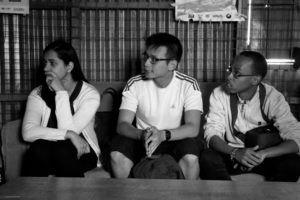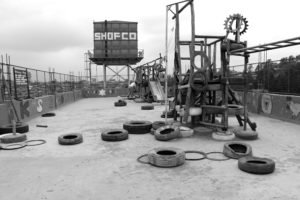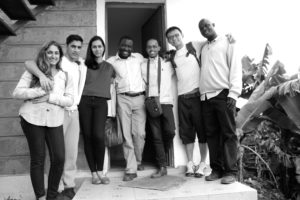 The aim of the project is to transform slums (informal settlements) into sustainable eco-cities through the use of biotechnology. Having assessed the conditions of Kibera, the largest slum area, our group identified several health issues caused by poor waste management and poor water sanitation infrastructure. This has led to the widespread of Cholera and Typhoid within the community, along with other water born diseases. Toxic from waste (organic and non-organic) contributes to the pollution in the slum which further aggravates the spread of illness and hygiene problems. A high population density of approximately 1 million people living on 4km2 of land, presents serious health issues given the contaminated environment that they are in.
The aim of the project is to transform slums (informal settlements) into sustainable eco-cities through the use of biotechnology. Having assessed the conditions of Kibera, the largest slum area, our group identified several health issues caused by poor waste management and poor water sanitation infrastructure. This has led to the widespread of Cholera and Typhoid within the community, along with other water born diseases. Toxic from waste (organic and non-organic) contributes to the pollution in the slum which further aggravates the spread of illness and hygiene problems. A high population density of approximately 1 million people living on 4km2 of land, presents serious health issues given the contaminated environment that they are in.
Our project sets out to rectify these issues through the use of biotechnology with an innovative landscape design and network ecosystem to maximize the use of land while addressing health and social issues in the area. This can be achieved through the implementation of a bioenergy center applying existing (anaerobic digestion) and new (micro-algae) biotechnology on waste to create renewable energy. With the energy center as the focal point, and infrastructures built around it to generate a network of synergy to create an eco-city. Public toilet facilities will be built to improve the waste management situation and also acts as a storage facility for the bioenergy center where bacteria can work on the waste to produce biogas and fertilizers. Biogas will be pumped into the gas generator to produce electricity, while the project will design and maintain an efficient greenhouse, which uses the fertilizers to produce food for the community. Micro-algae will be used on waste simultaneously to clean up the environment while biofuel and usable water are produced as a by-product of the bioreaction to be used by the community.

The project addresses multiple health issues in the settlement, as it has been a chronic issue face by slums around the world. The lack of proper infrastructure to manage waste and provide clean water to the community has led to several health issues such as diarrhoea, parasitic infestation and fecal oral epidemics. Research have shown that a centralised sewage system is the backbone of sanitation in rich nations, therefore our project seeks add value to the community through implementing a network of synergy to transform slums into eco-cities. Diseases accounts for more than half the deaths of children under five and the main cause was in part due to the continuous exposure to environmental hazard coupled with the lack of basic amenities (IRIN, 2008). Our project reinvents the way locals manage their waste and generate multiple sources of energy and clean water to support the livelihood of the area. Contaminated water have been the main cause of diseases in the area, by introducing new source of water for the community and provide adequate segregation of waste from the environment reduces the likelihood of diseases spreading.





We strive to set precedent on eradicating some of the key health issues that slum-dwellers are facing, with the use of biotechnology to provide sustainable resources and long-lasting changes to the infrastructure in the slum. Efforts have been made by multiple NGOs, charities, MNCs to improve the situation, however progress has been slow. Our project acknowledges this global problem and possesses the potential to alleviate the situation and 800million other slum dwellers around the world.
Our project is unique in the way that the synergy we obtained by connecting various existing models to create positive value to the community, which enables us to realise the vision of eradicating global health issues and social problems.
We strive to address the core problem the community is facing, which is the lack of basic amenities and centralised sewage system which contributed to the environmental hazard. However, unlike many other social initiatives whom are building toilets and other amenities in the area we took a holistic approach in solving these health problems. Past research and evidences have showed that building infrastructure and amenities in these areas have little impact on the overall wellbeing of the locals(Jenkins, 2014).

Therefore we bring isolated ideas together to create a conducive environment which changes the way slum-dwellers live their lives. Very often, organizations look at the problem and produce direction solutions for the problems that they observed and not allowing individual projects interact to generate new ideas.

Our idea pushes the boundary in the area where we seek to provide a whole new living experience to the community where the basic necessity of survival is provided for in our eco-city.